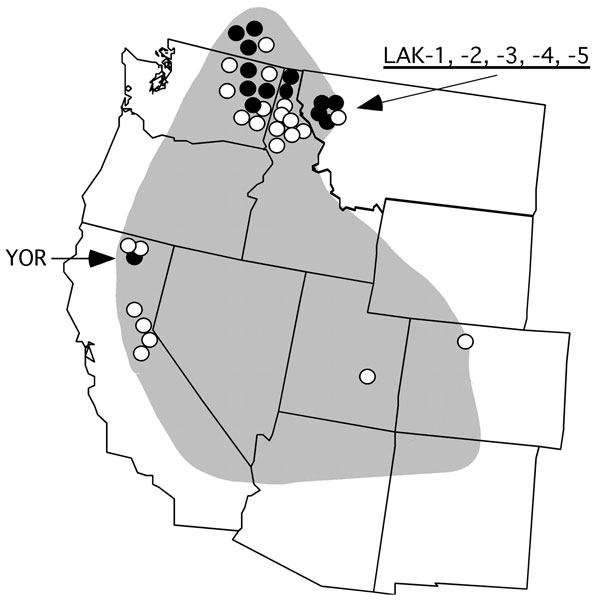Volume 13, Number 3—March 2007
Research
Diversity and Distribution of Borrelia hermsii
Figure 1

Figure 1. Western United States showing the approximate endemic range of tickborne relapsing fever associated with Ornithodoros hermsi and the localities of origin for the 37 Borrelia hermsii isolates included in this study. Genome group I (GGI) isolates are shown by open circle; GGII isolates are shown by filled circle. Localities of 6 isolates discussed in detail are indicated with arrows.
Page created: June 29, 2010
Page updated: June 29, 2010
Page reviewed: June 29, 2010
The conclusions, findings, and opinions expressed by authors contributing to this journal do not necessarily reflect the official position of the U.S. Department of Health and Human Services, the Public Health Service, the Centers for Disease Control and Prevention, or the authors' affiliated institutions. Use of trade names is for identification only and does not imply endorsement by any of the groups named above.